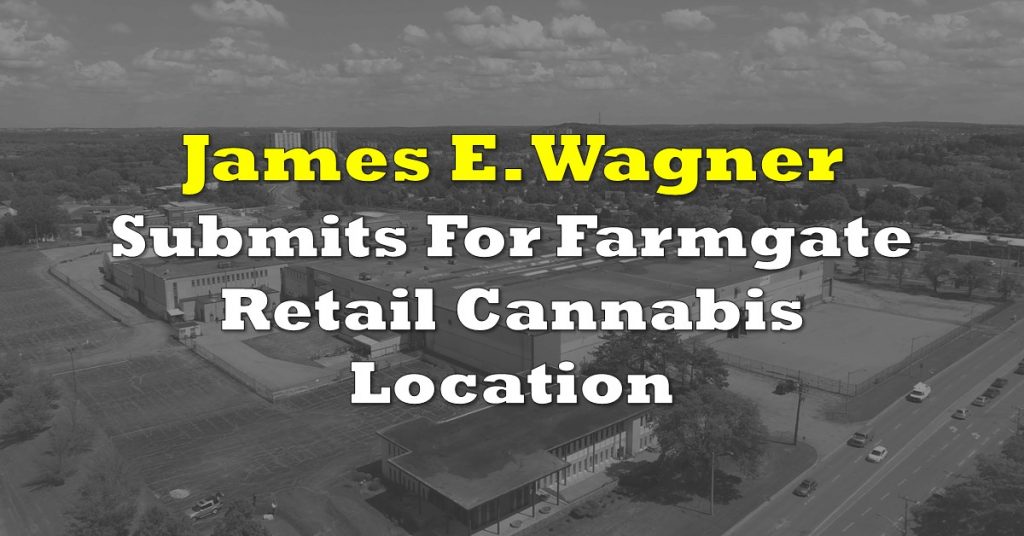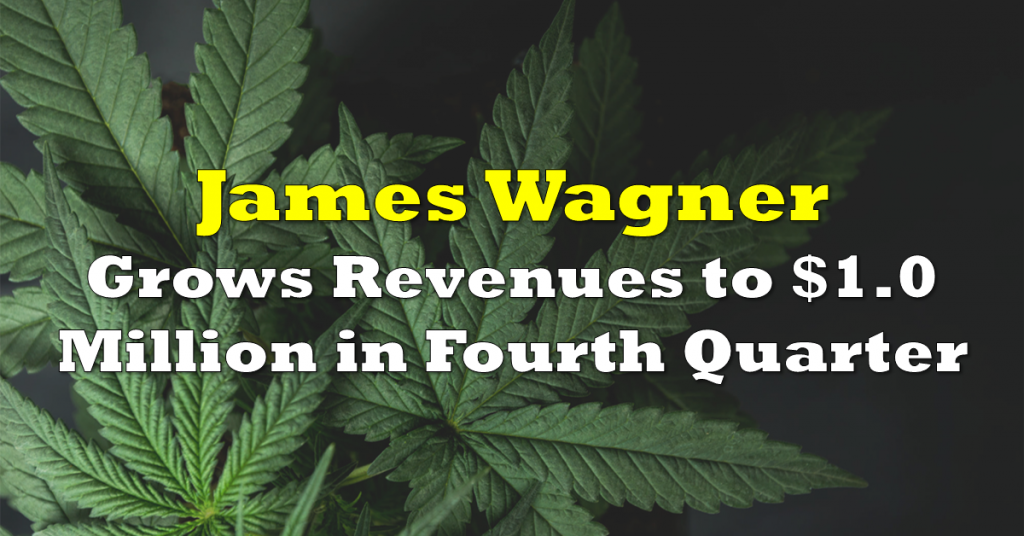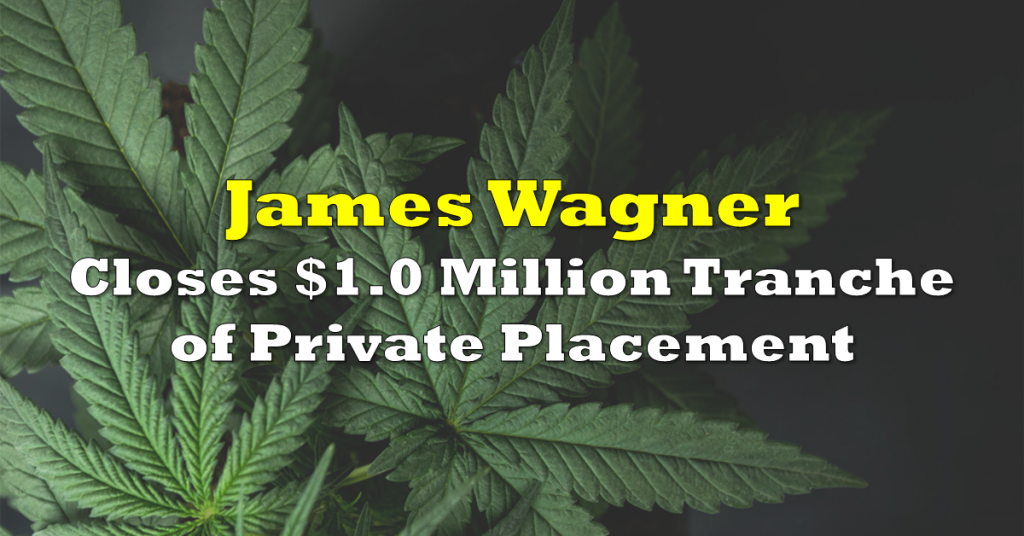With a confluence of negative factors affecting the sector – including several licensed producers failing to deliver on primary production facility buildouts – it’s easy to forget that some LPs are executing according to plan. While many Canadian juniors garner additional concerns about the long-term viability of their operations, some are sitting in a relatively good place. Thanks to the recent licence amendment granted by Health Canada, James E. Wagner Cultivation Corp. (TSXV: JWCA), the company believes, it is among those reasonably positioned for success.

This narrative track strengthened when on October 10th, JWC received approval from Health Canada for the expansion of four new flowering rooms at its flagship facility, JWC2. Overnight, the facility’s total licensed production capacity increased from 22,000 sq. ft. to approximately 44,500 sq. ft. This represents a doubling of cultivation potential, with finished goods expected to go to market during the company’s fiscal Q2 2020. It is anticipated that “E” and “H” pod will yield about 2,000 kg of dried cannabis per year, for a collective yield of approximately 9,000 kg/year company wide.
Although this announcement may be lost in the cacophony of bearish sector sentiment, it’s a big deal for JWC. The expansion amendment is a key component in allowing JWC to meet its guidance forecast delivered in the company’s recent post-earnings conference call.
James E. Wagner Cultivation Opens Up to the Investment Community
Confident that an improving revenue trajectory was sustainable, JWC elected to provide inaugural forward-looking guidance to analysts and investors following its fiscal Q3 2019 results on August 26, 2019. Shortly after James den Ouden, the company’s Chief Financial Officer, delivered his reporting quarter remarks, President and CEO Nathan Woodworth reclaimed the mic and opined on the topic everyone had dialed in to hear.
Anticipating accelerating revenue growth against modest expenditure increases in the quarters ahead, Nathan told investors to expect a material improvement in JWC’s financial position. Downstream, this is projected to culminate in positive cash flow from operations in fiscal Q2 2020; meaning that for the first time in company history, more money will be entering company coffers than flowing out in operating expenditures.
This projection wouldn’t have been possible without Health Canada delivering on Friday; an announcement that occurred only 106 days from the previous expansion amendment granted on June 28, 2019. It’s probably safe to infer that JWC’s strong compliance processes and good standing with Health Canada has helped expedite the approval process.
JWC – A Look Ahead
Should JWC meet its positive operational cash flow aspirations, it would be a milestone few junior LPs have achieved to date. While it would be premature to pop champagne corks and claim victory, it would ensure operational continuance as retail and edibles demand unlocks across Canada.
And unlock it will.
After a tepid first five months of legalization which saw total domestic recreational sales rise just 24.59% between October 2018-February 2019, sales growth has accelerated. Over the next five months between March-July 2019, recreational sales soared by 71.46%. While Canada’s sluggish recreational unlock has been disappointing, JWC’s foray into the rec market – anticipated to arrive this calendar quarter – should coincide with a market just beginning to hit its stride.
According to BDS Analytics predictions, monthly recreational cannabis sales could increase by 2.5x in size over aggregate sales recorded in July 2019 (latest available numbers) by March 2020 (end of JWC fiscal Q2 2020). Of course, the Canadian market will be buoyed be the introduction of edible products in December (AKA Cannabis 2.0). But it should also benefit via general maturation of the market, Ontario’s retail outlet ramp-up, and more competitive pricing along the curve.
For all the disappointment a sloppy legalization rollout has provided, the market remains in the nascent stages of a predictable and secular growth cycle in Canada. With recent capital markets carnage taking center stage, it’s easy to lose sight of this fact.
Final Thoughts
Although the entire Canadian junior cannabis complex is under severe pressure – pricing-in liquidation in some cases – JWC is positioned to overcome the challenges that await. Thanks to Health Canada’s latest extension amendment, operating cash flow should stabilize in tandem with JWC’s recreational and edibles launch introduction.
That doesn’t mean competitive, logistical and capital procurement (cost of capital) challenges don’t await – they do. But by taking a conservative approach to business building – including not over-leveraging the balance sheet or committing to CAPEX commitments JWC could never keep – JWC has avoided many of the pitfalls handicapping its peers.
Now, it’s all about execution and proving JWC has the right mix of differentiators (product quality, GrowthSTORM™), revenue drivers and brand maturity to succeed. We’re up to the challenge.
FULL DISCLOSURE: Benjamin A. Smith, the author of this article, currently serves as the Corporate Communications Manager at James E. Wagner Cultivation.
James E Wagner Cultivation is a client of Canacom Group, the parent company of The Deep Dive. Canacom Group has been compensated by James E Wagner Cultivation to provide coverage on The Deep Dive. Always do additional research and consult a professional before purchasing a security.









